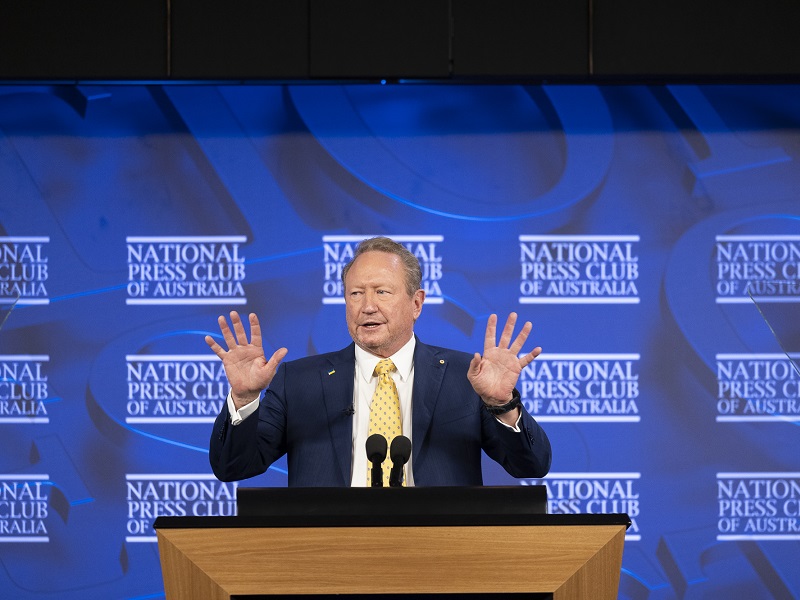The Albanese government should consider a tax credit scheme that apes the US Inflation Reduction Act to drive investment in developing renewables to accelerate the energy transition, Fortescue chair Andrew ‘Twiggy’ Forrest said on Monday.
The $600 billion Inflation Reduction Act (IRA) was driving investment into the US at a rate not see in decades, Dr Forrest told the National Press Club, and Australian policy-makers should consider using the same tax-credit structure to do the same for local renewable.
The tax credit under the IRA is not a subsidy, and does not require an upfront imposition on taxpayers.
“What they’re doing is putting tax credit on an industry which doesn’t exist; on a profit which hasn’t been made; [in an industry] which they want to get into existence as soon as possible,” Dr Forrest said.
“In other words, it’s kind of a future monopoly money. It’ll get paid when the industry is brought into existence, when the profit is actually made, and when the tax gets paid. But none of that exists now,” he said.

“I see that for what it is; a vast investment multiplier and an economic engine. What I know is happening now in North America is this stonking great economic engine called the IRA, which is bringing in investment at a rate which United States has not seen for decades, turning itself into a new green energy engine.
“Is that great policy? I think it’s great policy. It’s not a subsidy. It’s an economic engine.”
In mid-2023, Fortescue Future Industries made its first major move in the US following the introduction of the IRA with a US$24 million acquisition of a Pheonix Hydrogen Hub, a liquid green hydrogen project.
Asked what kind of policy would support such an investment in a development industry in Australia, Dr Forrest said he would go for an IRA-style policy for Australia “which is a green hydrogen tax credit on an industry which doesn’t yet exist, but on a profit that hasn’t been made, you’re going to give a credit back. That is really clever policy.”
While Treasury is understood to be considering a response to IRA that would include tax changes for renewables and energy transition projects, the Fortescue chair offered three simple “shortcuts” to drive the energy transition.
First, Dr Forrest proposes a ‘Best for Australia’ test, under which every energy project that requires government approval must consider the long-tail climate impact of that project.
“That means we must take climate change and carbon pollution impact into account in any project approval. It will be seen as asinine if we don’t and it is long overdue that we do,” he said.
“It is a simple and reasonable government requirement that carbon emissions and global warming automatically be part of any environmental assessment. Energy companies will quickly pivot to green energy to meet their contracts.”
Secondly, government should ‘lean into’ the lowest cost energy solution – being wind and solar, firmed with pumped hydro, battery and gas – and build them faster.
And thirdly he says government should adopt the Carbon Solutions Levy put forward by Ross Garnaut and Rod Simms earlier this month. The CSL would put a price on every tonne of fossil fuel extracted from the ground or imported into Australia.
The levy raised would be reinvested into supported the broader energy transition.
“A carbon solutions levy is not a carbon tax. Carbon taxes are generally applied wherever emissions occur in the economy, say at the cement factory or at the petrol pump,” Dr Forrest said.
“But the carbon solutions levy would only be applied to the 100 odd fossil fuel extraction sites in Australia and to importers.
“The beauty of this levy is that it does not penalise everyday Australians – it only penalises the perpetrators of this crisis, the fossil fuel industry,”
Do you know more? Contact James Riley via Email.

